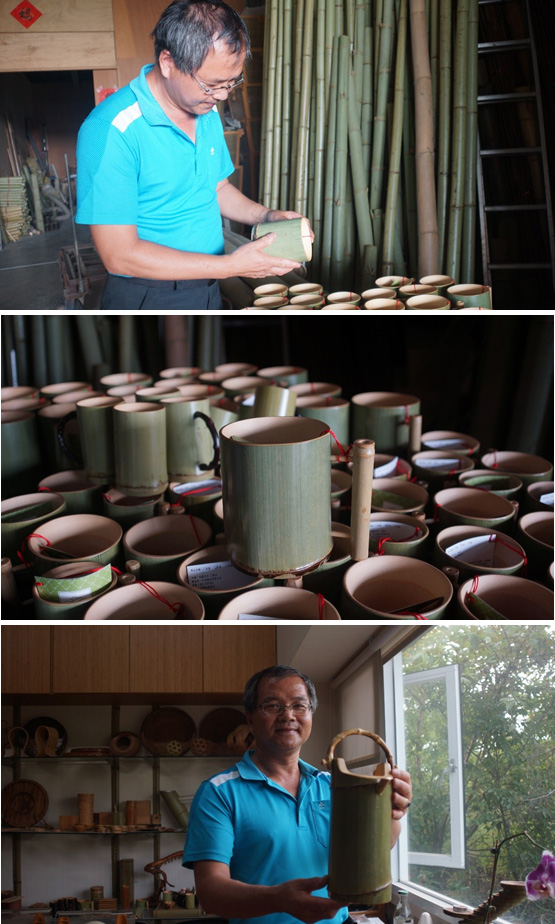eatured merchants
Featured merchants Bamboo fragrance extraction productZhu Cai
The very first time I saw a bamboo cup that kept the original green color was in the period of preparation for participation in a Korean exhibition to which I provided assistance, when I spotted a handmade teacup of green bamboo skin among the massive consigned items. I could not wait to take it out to admire, as I wondered how that cup remained a green look after having been dried in the fabrication process. It was six months afterwards that I personally visited 竹采藝品公司, which was advertised as Dr. Evergreen bamboo—Mr. 林群涵 on its official website. The first sight on entering its factory was artifacts or living ware that featured green bamboo, and the hard-working artisans.
Asked about how to let the bamboos keep the green color, Lin smiled with self-confidence and said that’s a “Green retaining technique” (Note 1).Back then when he studied at the graduate school of National Chung Hsing University, he found that bamboo owed its green color chiefly to the magnesium in chlorophyll, and that if the magnesium was replaced with element of copper, the chlorophyll b within could be remained, such that bamboo remained green after being dried; additionally its hardness could be increased and the color retention could last longer if used indoors. That was an unprecedented discovery at that time and excited Lin very much, who was a graduate student after having done his military service. Being able to make furniture or ware in green bamboo skin color brought about a new wave of fashion in the realm of bamboo arts in the era of busy export of bamboo furniture, also the late period of boom in OEM. At that time when the thinking of patents was not prevalent, Lin, absorbed in his lab work, was unaware of such fashion of imitation out there in the market.
All these efforts are now gradually flowing back and accumulating, as many people are giving away 竹采藝品’s cups or teapots as choice of gift to their foreign visitors.
While perfecting the green-retaining technique, Lin also makes effort at the safe coloration technique on multiple bamboo materials. For instance, making black items by smoke charring and then applying color fixation with natural lacquer. So doing not only avoids brittleness of bamboo resulting from full charring and retains its strength but also creates the blackish luster in bamboo charcoal. Moreover, the injection of nontoxic dyes into bamboos while they grow allowing the dyes to be transported with the growth of the bamboos creates special lines and stripes, which attracts Japanese artists to approach for production and cooperation with them. That indicates that creative coloring techniques allow bamboos as a material to have more diverse looks and make designers be more aware of bamboos when they choose from materials.
Contact information

